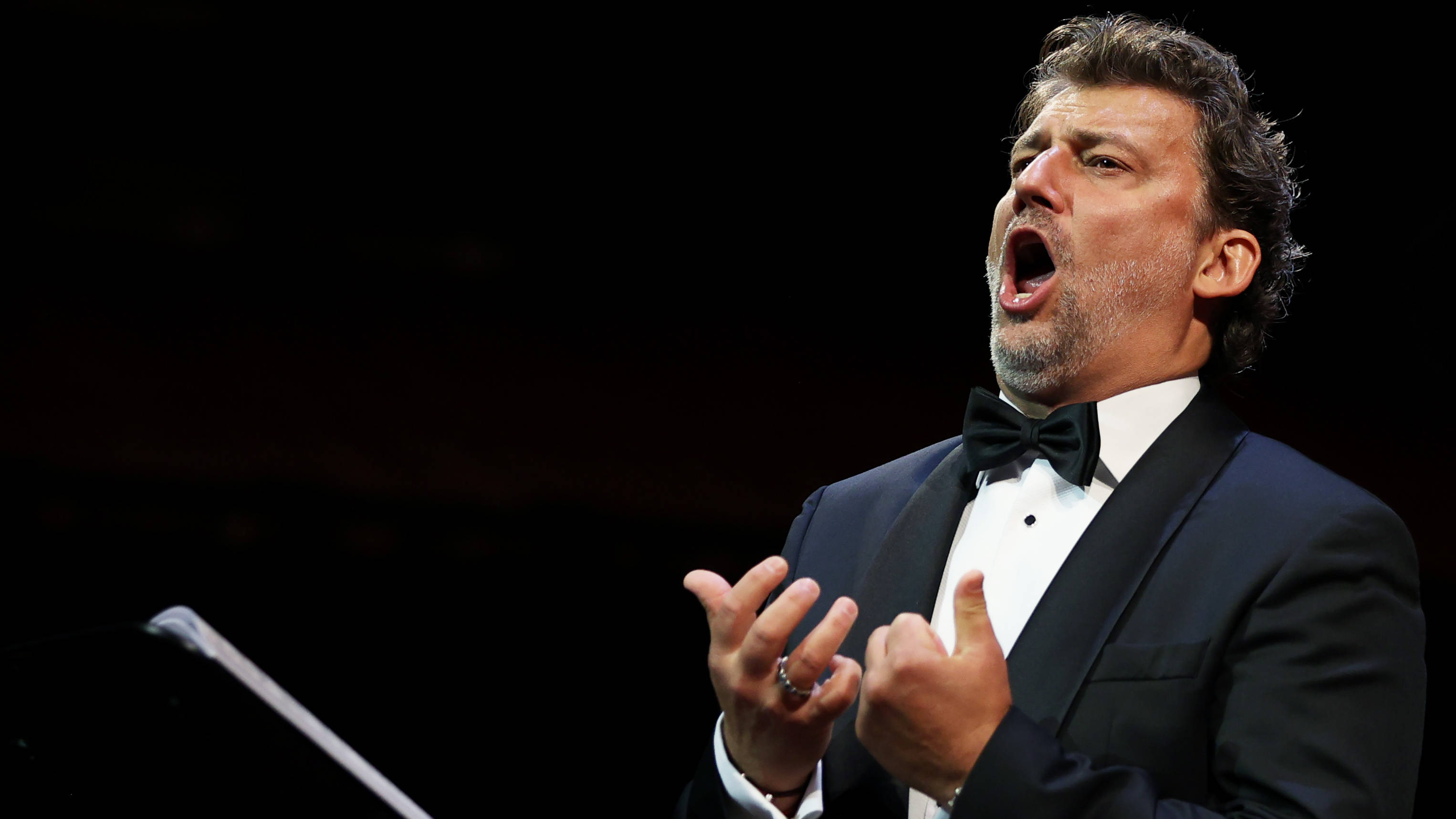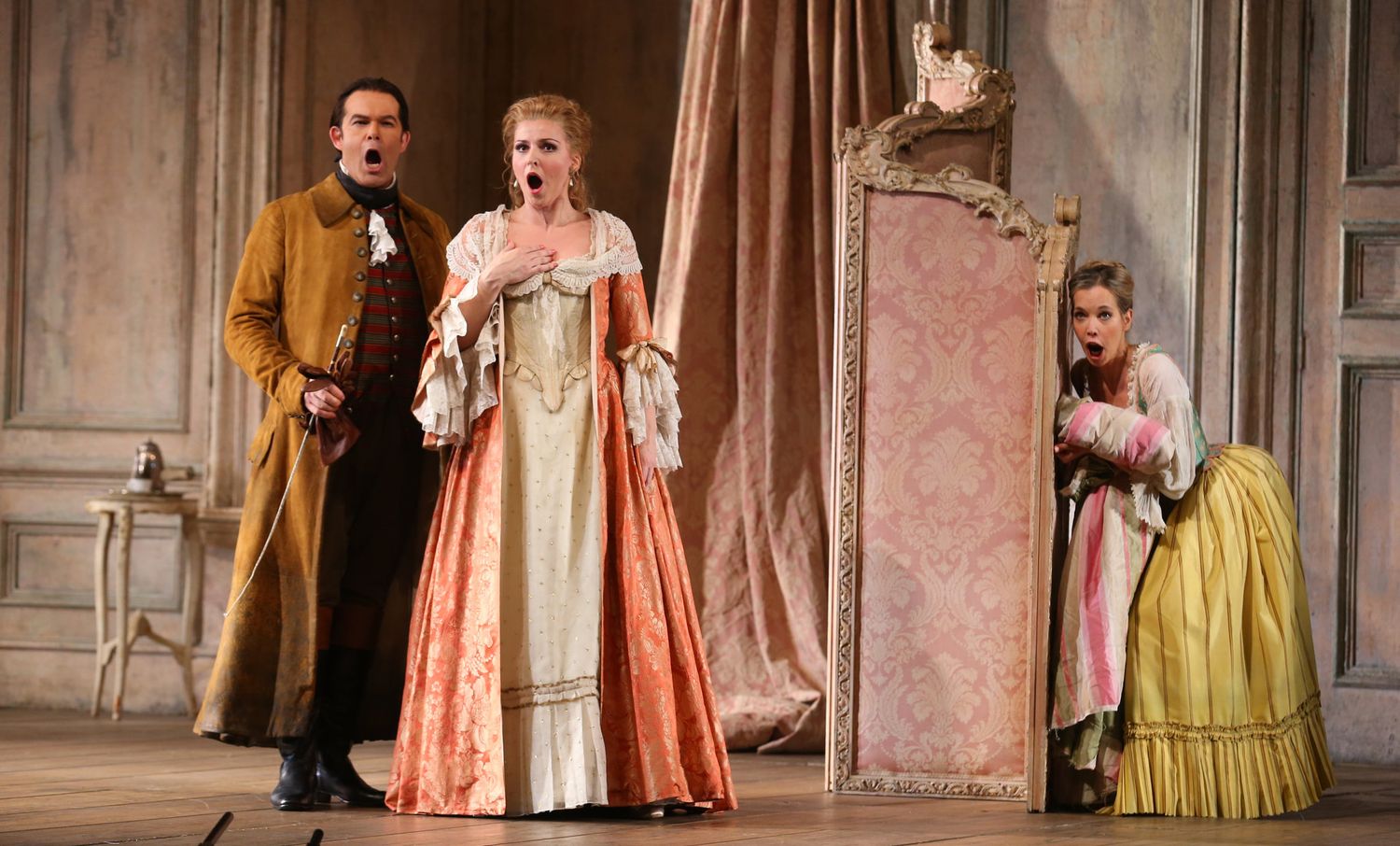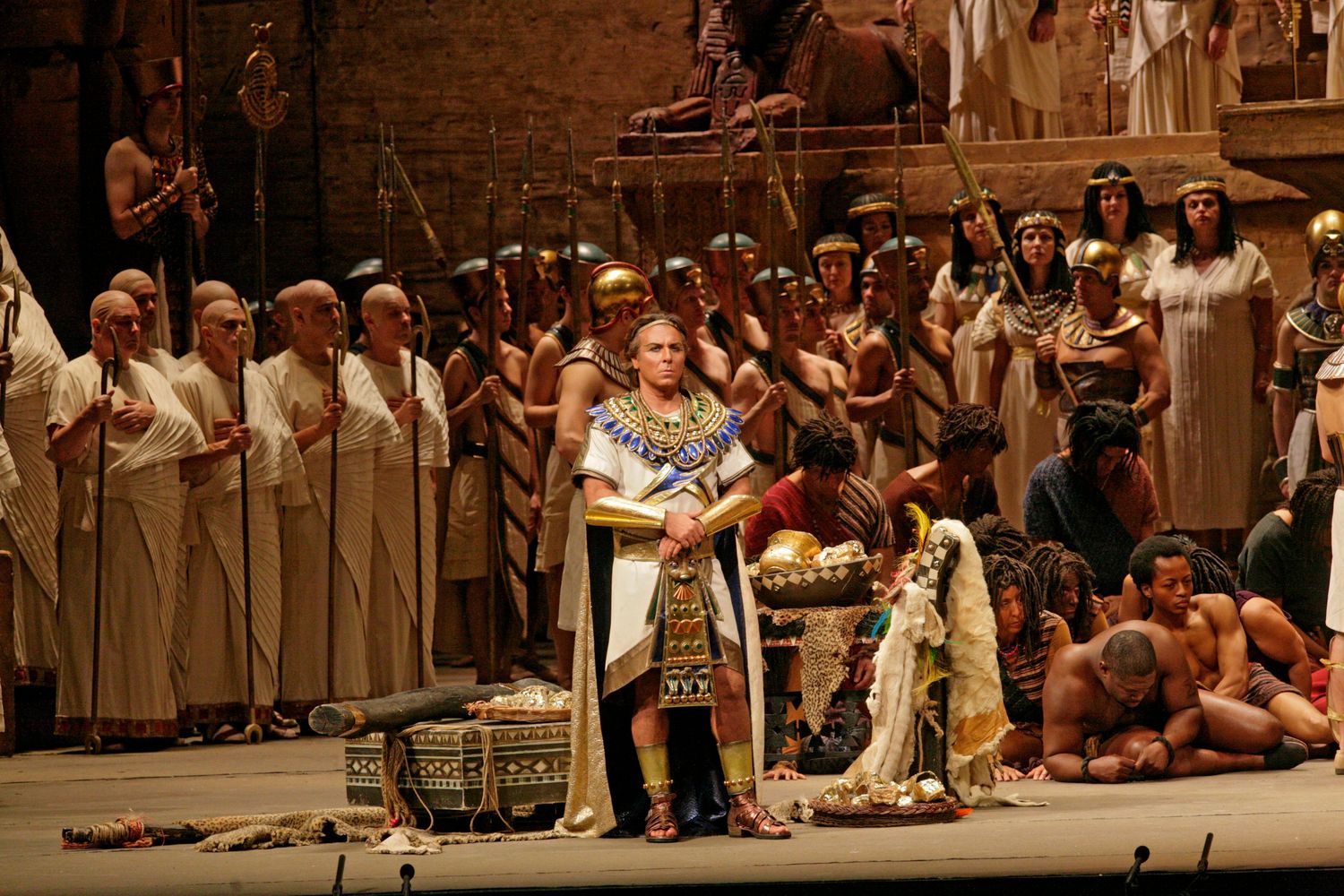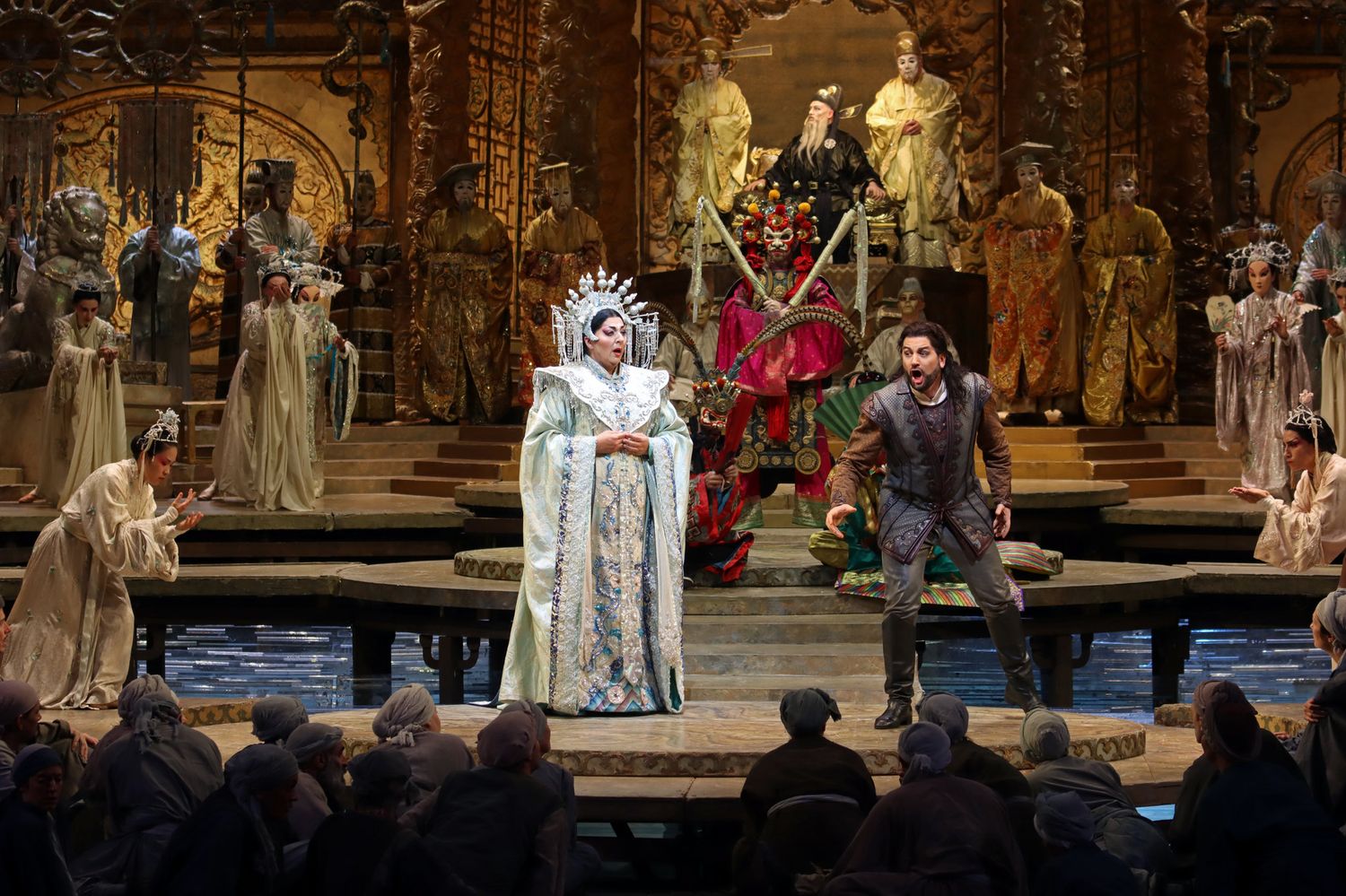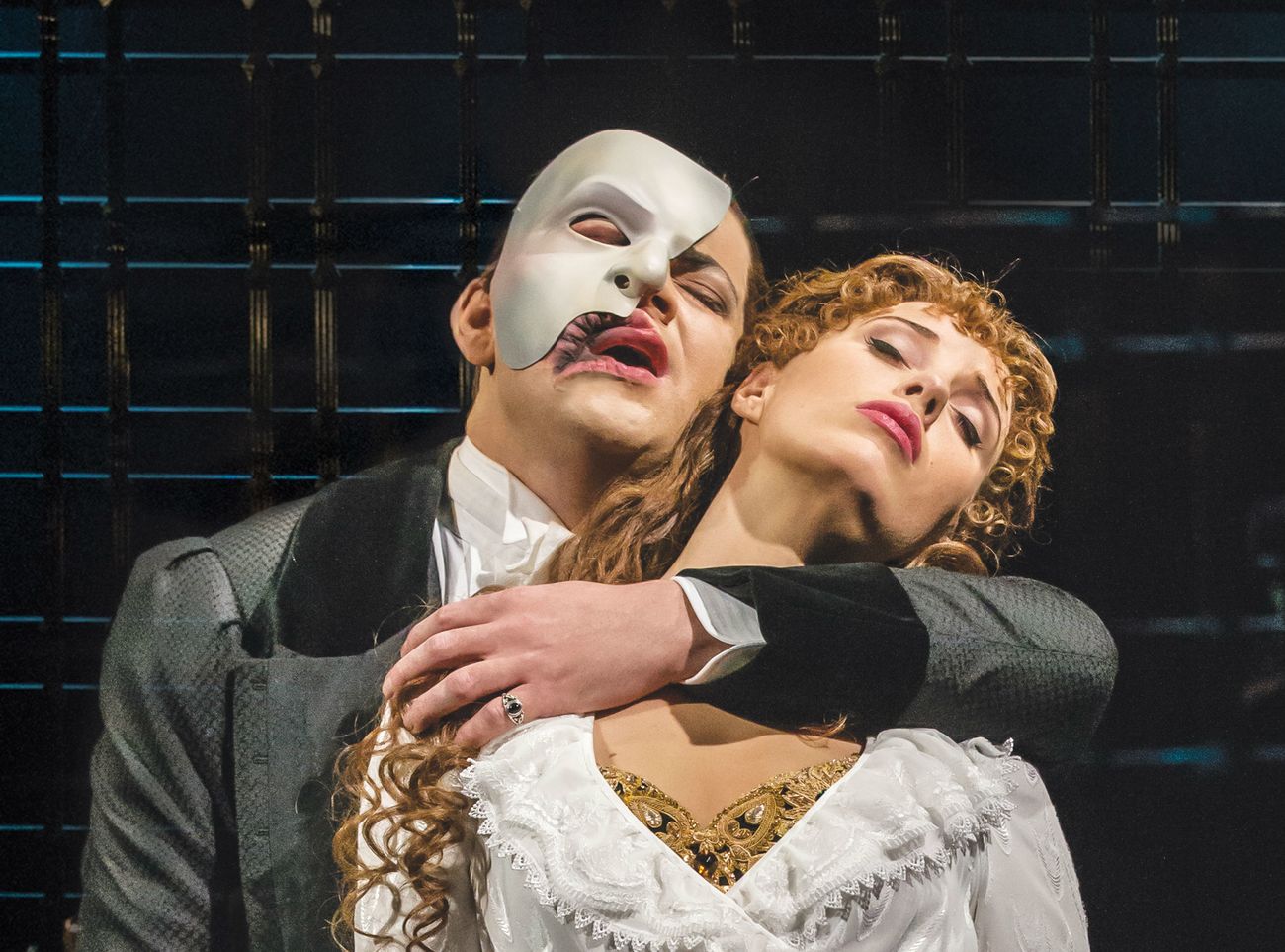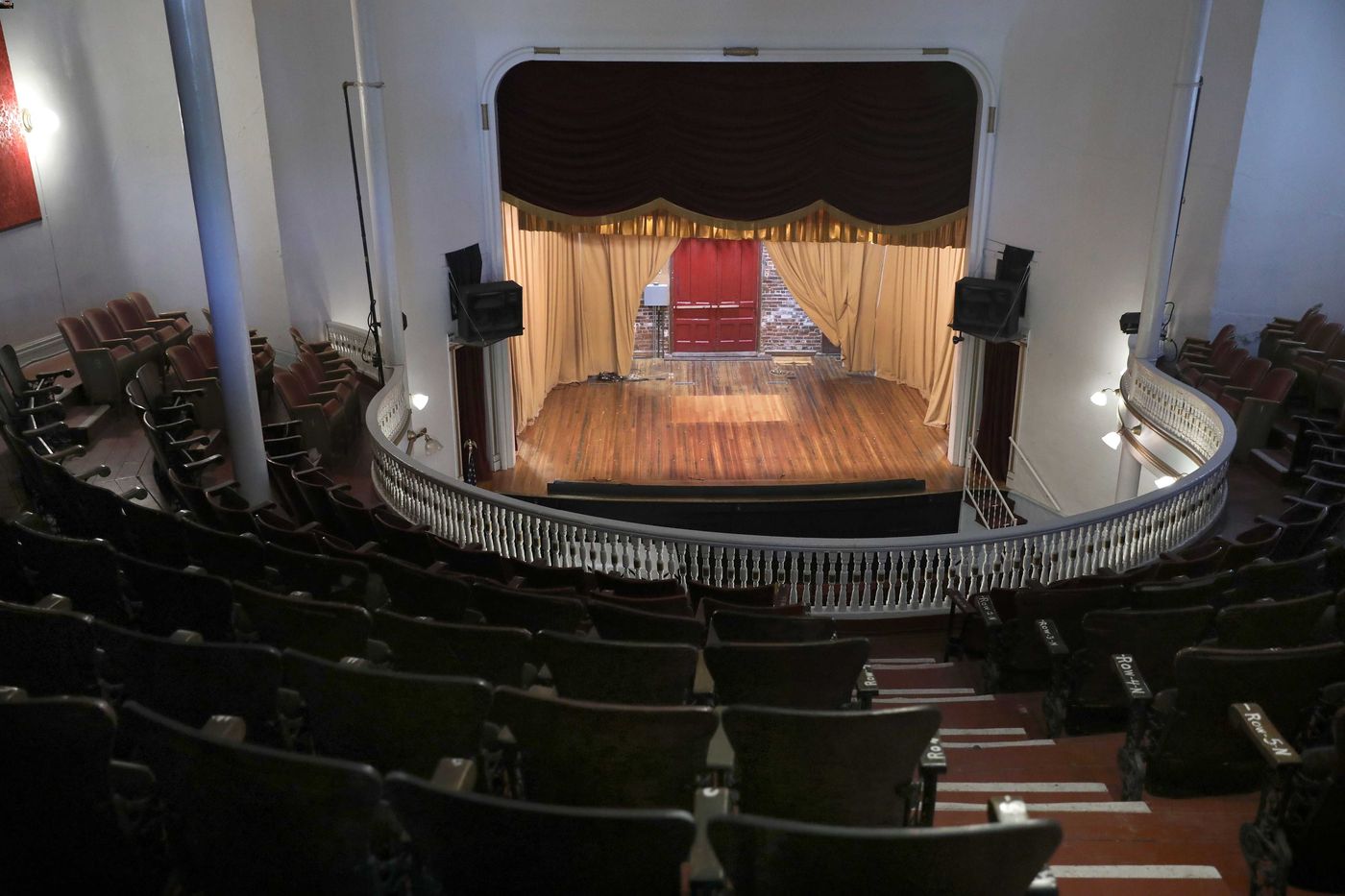Home>Events & Info>Opera>What Is Opera Buffa?


Opera
What Is Opera Buffa?
Modified: January 22, 2024
Discover the lively and comedic world of opera buffa. Explore the origins and characteristics of this entertaining genre that showcases the brilliance of opera. Uncover the magic of opera with a touch of humor.
(Many of the links in this article redirect to a specific reviewed product. Your purchase of these products through affiliate links helps to generate commission for AudioLover.com, at no extra cost. Learn more)
Table of Contents
Introduction
Opera buffa, also known as comic opera, is a genre of opera that originated in Italy in the 18th century and gained popularity across Europe. It is characterized by its lighthearted, humorous tone and focuses on ordinary people and commonplace situations.
The term “buffa” comes from the Italian word “buffo,” which means “funny” or “comic.” Opera buffa is a departure from the more serious and dramatic opera seria, which was popular during the Baroque era. It aimed to entertain the audience through its witty plotlines, humorous characters, and catchy melodies.
Throughout its history, opera buffa has played a significant role in the development of opera as an artform. It revolutionized the way stories were presented on the operatic stage, bringing a new level of accessibility and entertainment. Its influence can still be felt in modern-day opera and musical theater.
In this article, we will examine the definition and origins of opera buffa, explore its key characteristics, delve into the comedic elements that make it unique, and highlight some of the most renowned composers and works within this genre.
Definition of Opera Buffa
Opera buffa, also known as comic opera, is a genre of opera that is characterized by its humorous and comedic elements. It is a lighter form of opera that focuses on ordinary people and everyday situations, often contrasting the more serious and dramatic themes found in other operatic genres.
Opera buffa is known for its witty dialogues, fast-paced action, and lively music. The storylines typically revolve around mistaken identities, romantic entanglements, and humorous misunderstandings. The comedic elements in opera buffa are often driven by satire, irony, and social commentary, making it a delightful and entertaining experience for the audience.
This genre of opera emerged in Italy in the mid-18th century and quickly gained popularity across Europe. It was a reaction to the more formal and serious opera seria, which focused on historical or mythological subjects and catered to the aristocratic audience. Opera buffa, on the other hand, appealed to a broader audience, including the middle class, with its relatable characters and relatable stories.
The music in opera buffa is typically light-hearted and melodic, with catchy tunes and lively rhythms. The vocal lines often include rapid-fire dialogue and comedic patter songs, showcasing the singers’ agility and comedic timing. The orchestration is usually lighter, featuring woodwind instruments, strings, and occasionally brass and percussion.
Overall, the essence of opera buffa lies in its ability to entertain and elicit laughter from the audience. It offers a refreshing break from the often grandiose and emotionally intense nature of other operatic genres, providing a light-hearted and comical experience that appeals to both opera enthusiasts and those new to the art form.
Origins and Development of Opera Buffa
The origins of opera buffa can be traced back to the commedia dell’arte, a popular form of improvisational theater in Italy during the Renaissance. Commedia dell’arte featured stock characters and comedic plotlines, and it heavily influenced the development of opera buffa.
Opera buffa began to gain traction in the mid-18th century when a group of librettists and composers sought to create a more accessible form of opera. Their goal was to appeal to a broader audience, including the middle class, by presenting relatable stories and memorable characters.
One of the early pioneers of opera buffa was Giovanni Battista Pergolesi, whose opera “La serva padrona” (The Maid as Mistress) premiered in 1733. This one-act opera buffa became a sensation and effectively challenged the dominance of the more serious opera seria.
As the popularity of opera buffa grew, it began to incorporate elements from other genres, such as the French vaudeville and the English ballad opera. Composers like Domenico Cimarosa, Giovanni Paisiello, and Gioachino Rossini further refined the genre and contributed to its development.
Opera buffa reached its height of popularity in the late 18th and early 19th centuries, particularly in Italy. It became an integral part of the opera repertoire and was performed in opera houses throughout Europe.
However, with the rise of Romanticism in the 19th century, opera buffa began to decline in popularity. The focus shifted to more serious and dramatic opera, which aligned with the emotional and expressive ideals of the Romantic movement.
Despite its decline, opera buffa left a lasting impact on the world of opera. Its influence can be seen in the development of operetta, musical theater, and even modern-day sitcoms. The lively and humorous nature of opera buffa continues to captivate audiences and brings a sense of light-heartedness to the operatic stage.
Characteristics of Opera Buffa
Opera buffa, with its comedic nature, is characterized by several key elements that distinguish it from other operatic genres. These characteristics contribute to its light-heartedness and appeal to a wide range of audiences.
1. Humorous Plotlines: Opera buffa typically revolves around humorous and light-hearted plotlines. The stories often involve mistaken identities, comedic misunderstandings, and romantic entanglements. The emphasis is on creating comedic situations that entertain and engage the audience.
2. Relatable Characters: Opera buffa showcases relatable characters from everyday life. These characters are often drawn from different social classes, providing a mix of comedic interactions and social commentary. The relatability of the characters allows the audience to connect with the story and find humor in the situations portrayed.
3. Satire and Social Commentary: Opera buffa often incorporates satire and social commentary as a means to entertain and criticize societal norms or behaviors. The witty dialogue and comedic situations allow for a humorous reflection on societal issues, providing a sense of lightheartedness and thought-provoking moments.
4. Catchy Melodies and Lively Music: The music in opera buffa is known for its catchy melodies and lively rhythms. The vocal lines are often virtuosic and intricate, allowing the singers to display their vocal agility and comedic timing. The orchestration is typically lighter, highlighting the comedic elements and enhancing the overall atmosphere of the performance.
5. Comedic Patter Songs: Opera buffa features comedic patter songs, which are fast-paced songs with rapid-fire lyrics. These songs often involve playful wordplay, quick exchanges between characters, and humorous dialogue. Patter songs showcase the singers’ vocal dexterity and comedic abilities.
6. Dialogue-driven Structure: Unlike other forms of opera, opera buffa relies heavily on spoken dialogue in addition to musical numbers. This dialogue-driven structure allows for more direct and immediate communication between characters, enhancing the comedic timing and allowing for a deeper connection with the audience.
These characteristics collectively contribute to the unique appeal of opera buffa. Its light-hearted and humorous nature, relatable characters, and catchy melodies make it an enjoyable and accessible form of opera that continues to captivate audiences around the world.
Comedic Elements in Opera Buffa
Opera buffa is renowned for its comedic elements, which add a sense of liveliness and entertainment to the genre. These comedic elements play a crucial role in engaging the audience and creating an enjoyable experience. Let’s delve into some of the key comedic elements found in opera buffa.
1. Physical Comedy: Physical comedy is a staple of opera buffa. It involves exaggerated movements, slapstick humor, and comedic gestures. The characters often engage in comedic antics, such as stumbling, falling, or engaging in humorous physical interactions. These moments of physical comedy provide visual humor and generate laughs from the audience.
2. Verbal Wit and Wordplay: Verbal wit and wordplay are essential in opera buffa. The librettos feature clever dialogues, puns, and double entendres that add a layer of humor. The characters engage in witty banter, quick comebacks, and clever repartee, creating moments of comedic brilliance through their verbal exchanges.
3. Comedic Timing: Timing is crucial in comedy, and opera buffa is no exception. The execution of comedic moments requires precise timing to maximize their comedic impact. Whether it’s a perfectly timed punchline, a well-placed pause, or a comedic pause before a punchline, the rhythm and pacing of the performance contribute to the overall comedic effect.
4. Mistaken Identities: Mistaken identities are a recurring theme in opera buffa. Characters often find themselves in absurd situations due to mistaken identity, leading to comedic misunderstandings. These instances of mistaken identity create comedic tension and allow for humorous resolutions as the truth unfolds.
5. Exaggerated Characters: Opera buffa is known for its larger-than-life characters. These characters are often exaggerated stereotypes, portraying the extremes of human behavior. The buffoon, the cunning servant, the naive lover, and the pompous aristocrat are just a few examples of the comedic character types found in opera buffa. The exaggerated traits and behaviors of these characters add humor to the storyline.
6. Situational Comedy: Opera buffa incorporates situational comedy that arises from the circumstances and interactions between characters. The humorous situations can range from disguises and misunderstandings to comical confrontations and unexpected surprises. These situational comedic moments create anticipation, laughter, and a sense of delight for the audience.
Opera buffa’s comedic elements bring joy, laughter, and entertainment to the audience. Through physical comedy, verbal wit, comedic timing, mistaken identities, exaggerated characters, and situational humor, opera buffa presents a delightful and amusing experience that continues to charm and captivate audiences worldwide.
Famous Opera Buffa Composers
Opera buffa has been shaped by the contributions of many talented composers throughout history. These composers have left a lasting impact on the genre, creating memorable works that continue to be celebrated today. Let’s explore some of the most renowned opera buffa composers:
1. Gioachino Rossini: Considered one of the greatest composers of opera buffa, Rossini’s works are known for their vibrant melodies and energetic rhythms. His operas, such as “The Barber of Seville” and “La Cenerentola,” showcase his mastery of comedic timing, playful melodies, and witty librettos. Rossini’s contributions to opera buffa solidified his legacy in the genre.
2. Wolfgang Amadeus Mozart: Mozart’s operas span various genres, but he is also recognized for his comic operas, including “The Marriage of Figaro” and “Don Giovanni.” Mozart’s opera buffa works are filled with memorable characters, sparkling dialogues, and beautiful music. His ability to seamlessly blend humor with emotional depth showcases his genius as a composer.
3. Domenico Cimarosa: Cimarosa was a prolific Italian composer known for his operas, many of which are in the opera buffa genre. His works, such as “The Secret Marriage” and “The Italian Girl in London,” display his skill in crafting witty and engaging music that perfectly complements the comedic elements of the librettos. Cimarosa’s operas were highly popular during his time and remain cherished examples of opera buffa today.
4. Carl Maria von Weber: While Weber is best known for his German Romantic operas, he also made significant contributions to the opera buffa genre. His opera “Abu Hassan” exhibits his talent for writing light-hearted and humorous music, combining catchy melodies with comedic situations. Weber’s innovation and creativity added a unique touch to the opera buffa repertoire.
5. Giovanni Paisiello: A contemporary of Mozart, Paisiello was a highly regarded composer of opera buffa in the late 18th century. His works, such as “Barber of Seville” (predating Rossini’s famous opera of the same name) and “La serva padrona,” were widely performed and loved by audiences. Paisiello’s contribution to the development of opera buffa cannot be overlooked.
These are just a few examples of the many composers who have contributed to the opera buffa genre throughout history. Their creativity, talent, and ability to capture the essence of comedy in their music have shaped opera buffa into the vibrant and entertaining genre that it is today.
Notable Opera Buffa Works
Opera buffa has produced numerous iconic and beloved works throughout its history. These operas have become cornerstones of the genre, entertaining audiences with their comedic storylines, memorable characters, and delightful music. Here are some notable opera buffa works:
1. “The Marriage of Figaro” by Wolfgang Amadeus Mozart: This masterpiece is one of Mozart’s most renowned works. Based on the play by Pierre Beaumarchais, “The Marriage of Figaro” tells the story of a clever servant named Figaro and the comical events surrounding the impending marriage of Count Almaviva and Figaro’s love interest, Susanna. The opera is filled with sparkling music, brilliant ensemble pieces, and witty and fast-paced dialogue.
2. “The Barber of Seville” by Gioachino Rossini: Adapted from the play by Pierre Beaumarchais, “The Barber of Seville” is a comic opera that follows the escapades of the quick-witted Figaro as he aids Count Almaviva in his quest to win the heart of Rosina. The opera is beloved for its catchy melodies, humorous situations, and memorable characters, including the iconic barber Figaro.
3. “Don Giovanni” by Wolfgang Amadeus Mozart: While not strictly categorized as opera buffa, “Don Giovanni” incorporates comedic elements alongside its darker themes. This dramatic comedy tells the story of the infamous libertine Don Giovanni and his encounters with various women. Mozart’s music brilliantly captures the essence of each character, including the humorous Leporello, Don Giovanni’s loyal servant.
4. “The Italian Girl in Algiers” by Gioachino Rossini: This opera buffa showcases Rossini’s genius for comic writing. It revolves around Isabella, an Italian girl who, shipwrecked in Algiers, cleverly outwits the bey and eventually saves her captive lover Lindoro. “The Italian Girl in Algiers” features delightful arias, humorous ensembles, and a comedic plot that keeps the audience entertained from start to finish.
5. “The Elixir of Love” by Gaetano Donizetti: While not strictly opera buffa, “The Elixir of Love” combines elements of comedy and romance. The opera tells the story of the shy and love-struck Nemorino, who believes that a love potion will make the woman of his dreams fall in love with him. The opera’s charming melodies, comic moments, and touching romance make it a beloved work in the operatic repertoire.
These are just a few of the many notable opera buffa works that have delighted audiences over the years. Each of these operas captures the essence of the genre, showcasing comedic situations, memorable characters, and beautiful music that continue to entertain and enchant opera lovers around the world.
Conclusion
Opera buffa, with its lighthearted and comedic nature, has had a profound impact on the world of opera. This genre, characterized by relatable characters, humorous plotlines, and catchy melodies, has captivated audiences for centuries. From its origins in 18th-century Italy to its influence on modern-day opera and musical theater, opera buffa continues to bring joy and laughter to the stage.
Throughout this article, we explored the definition and origins of opera buffa, delved into its key characteristics, and highlighted the comedic elements that make it unique. We also discussed notable opera buffa composers and showcased some of the genre’s most beloved works.
Opera buffa stands as a testament to the power of humor and entertainment. It offers a refreshing break from the seriousness of other operatic genres and provides a gateway for audiences to connect with opera on a relatable and enjoyable level. Its ability to weave together laughter, satire, and social commentary creates a rich tapestry of emotion and amusement.
As we continue to appreciate and celebrate opera buffa, its legacy lives on. Its influence can be seen in the enduring popularity of works such as “The Marriage of Figaro,” “The Barber of Seville,” and “Don Giovanni.” These operas, along with many others, continue to be performed and cherished by audiences worldwide.
Whether it is the wit and wordplay of the librettos, the physical comedy on the stage, or the infectious melodies that stay with us long after the final curtain falls, opera buffa has left an indelible mark on the world of music and theater.
So, the next time you find yourself in the audience of an opera buffa performance, allow yourself to be swept away by the laughter, the joy, and the sheer entertainment that this genre offers. Opera buffa invites us to embrace the power of humor and reminds us of the beauty of laughter in our lives.

